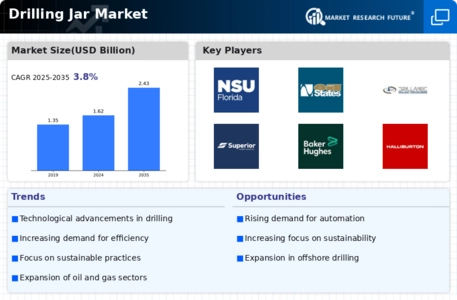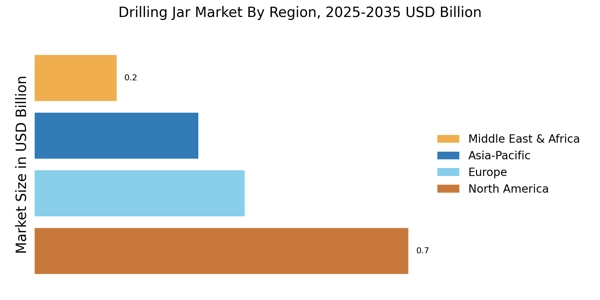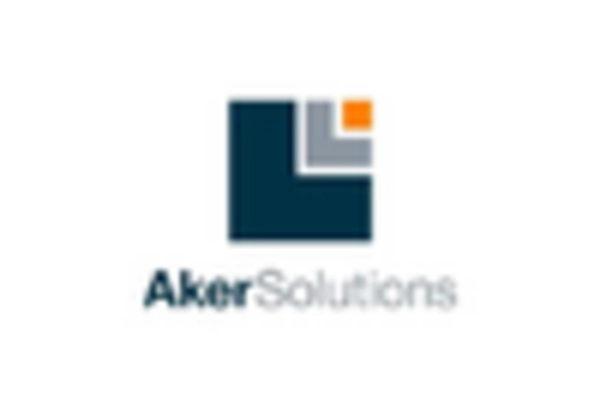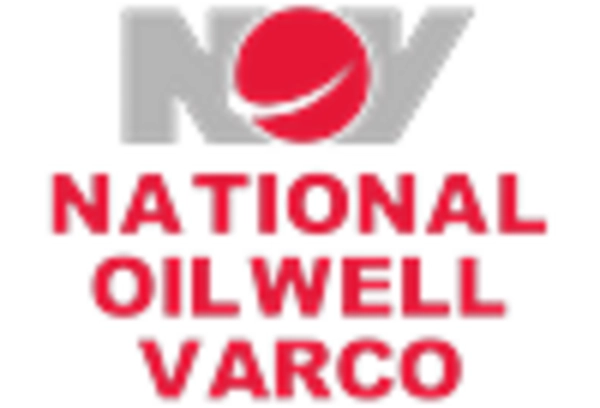Increased Demand for Oil and Gas
The Drilling Jar Market is experiencing heightened demand due to the ongoing need for oil and gas resources. As economies continue to develop, the energy sector remains a critical component, driving exploration and production activities. This demand is reflected in the rising number of drilling projects, which necessitate the use of drilling jars to enhance efficiency and safety during operations. According to recent data, the oil and gas sector is projected to grow at a compound annual growth rate of approximately 5% over the next few years, further propelling the need for advanced drilling equipment. Consequently, the Drilling Jar Market is poised to benefit from this upward trend, as operators seek reliable tools to optimize their drilling processes.
Regulatory Compliance and Safety Standards
The Drilling Jar Market is influenced by stringent regulatory frameworks and safety standards that govern drilling operations. Compliance with these regulations is essential for companies to operate effectively and avoid penalties. As safety becomes a paramount concern, operators are increasingly investing in high-quality drilling jars that meet or exceed industry standards. This focus on safety not only protects personnel and the environment but also enhances operational efficiency. Recent statistics indicate that companies adhering to safety regulations experience fewer accidents and operational disruptions, which can lead to significant cost savings. Therefore, the emphasis on regulatory compliance is likely to drive growth in the Drilling Jar Market, as firms prioritize safety in their drilling operations.
Technological Innovations in Drilling Equipment
Technological advancements play a pivotal role in shaping the Drilling Jar Market. Innovations such as automated drilling systems and advanced materials are enhancing the performance and reliability of drilling jars. These developments not only improve operational efficiency but also reduce downtime and maintenance costs. For instance, the introduction of smart drilling technologies allows for real-time monitoring and adjustments, which can significantly enhance drilling outcomes. As companies increasingly adopt these technologies, the Drilling Jar Market is likely to witness a surge in demand for high-tech drilling jars that can withstand extreme conditions and provide superior performance. This trend indicates a shift towards more sophisticated drilling solutions, aligning with the industry's overall evolution.
Rising Exploration Activities in Emerging Markets
Emerging markets are witnessing a surge in exploration activities, significantly impacting the Drilling Jar Market. Countries with untapped oil and gas reserves are increasingly attracting investments, leading to a rise in drilling projects. This trend is particularly evident in regions where energy demand is escalating, prompting governments and private entities to explore new resources. As exploration activities intensify, the need for reliable drilling jars becomes paramount to ensure successful operations. Market data suggests that investments in exploration in these regions could increase by over 10% in the coming years, thereby creating substantial opportunities for the Drilling Jar Market. This growth trajectory indicates a favorable environment for manufacturers and suppliers of drilling jars.
Focus on Operational Efficiency and Cost Reduction
The Drilling Jar Market is significantly influenced by the ongoing focus on operational efficiency and cost reduction within the drilling sector. Companies are increasingly seeking ways to optimize their drilling processes to minimize costs while maximizing output. This trend has led to a greater emphasis on the use of advanced drilling jars that enhance performance and reduce the likelihood of failures. By investing in high-quality equipment, operators can achieve better drilling results, which translates to lower operational costs. Market analysis indicates that firms that prioritize efficiency can reduce their drilling costs by up to 15%, making the adoption of superior drilling jars a strategic imperative. As such, the drive for operational efficiency is likely to propel growth in the Drilling Jar Market.


















Leave a Comment